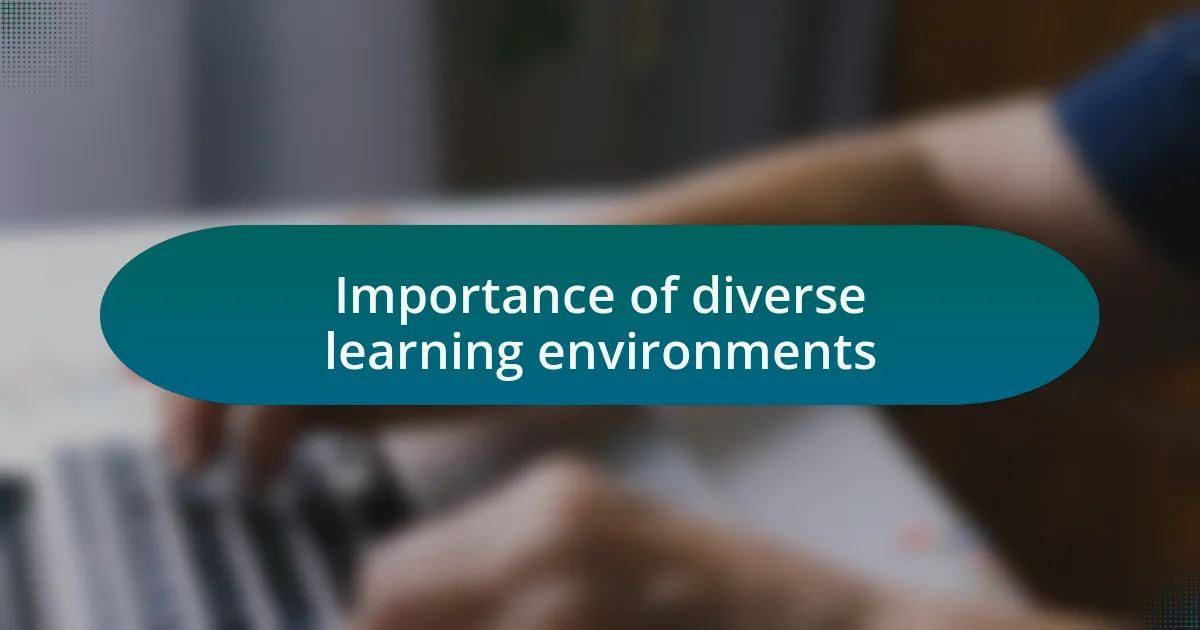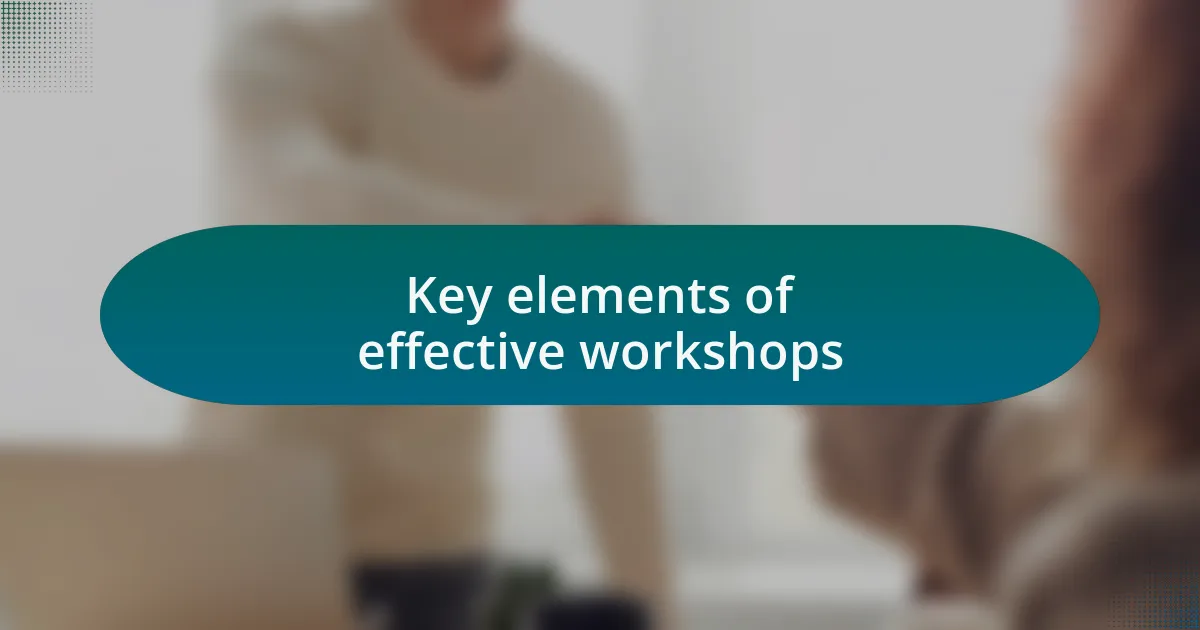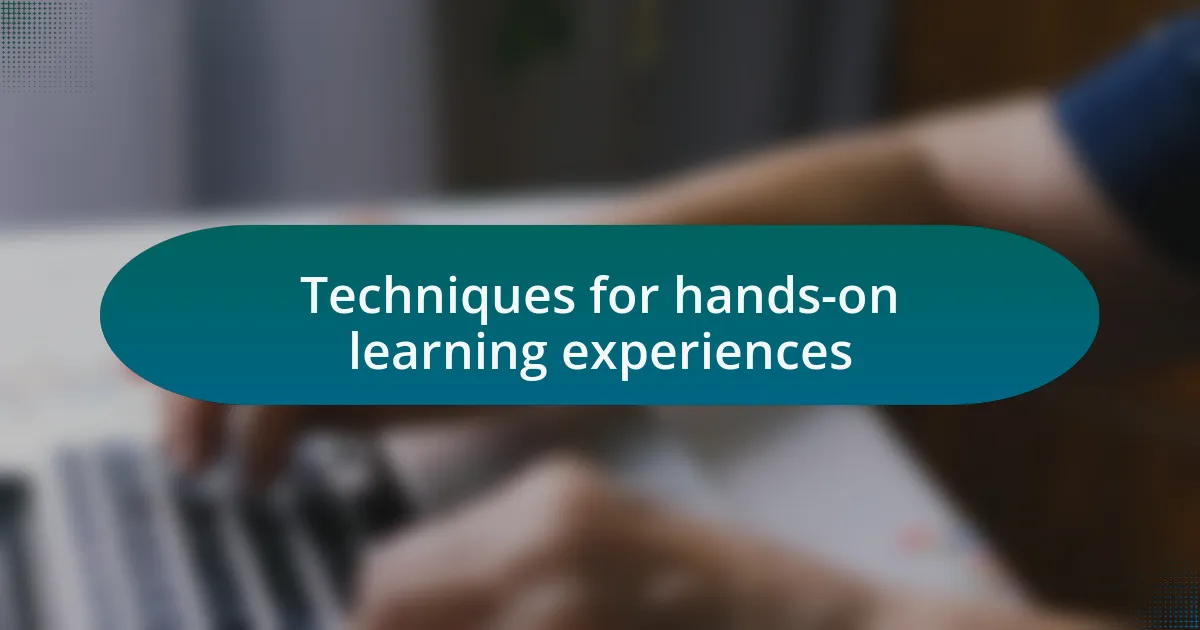Key takeaways:
- Clear objectives guide workshop structure and maintain participant engagement.
- Diverse learning environments enhance discussions and foster inclusivity, leading to creative solutions.
- Active engagement and adaptability are essential for effective workshops, ensuring all participants feel included.
- Incorporating various teaching modalities and leveraging technology can effectively engage diverse participants.

Understanding workshop design principles
When I design workshops, I always start with clear objectives. It’s fascinating to see how having defined goals not only guides the structure but also keeps participants focused. Have you ever experienced a workshop without clear aims? It often leads to confusion and disengagement, which is something I strive to avoid.
Another key principle I emphasize is understanding the audience. I’ve learned that each group brings unique experiences and expectations to the table. One time, I conducted a workshop that catered to both seasoned professionals and novices. The contrast in their knowledge required me to adjust my approach continuously. It taught me the importance of flexibility in design to ensure everyone feels included and valued.
Lastly, I can’t stress enough the role of interactivity in a workshop. I’ve witnessed how participation can spark creativity and collaboration. Think about it—when was the last time you left a passive learning environment feeling inspired? I’ve found that incorporating hands-on activities creates memorable experiences that resonate long after the session ends, driving home the real value of the material covered.

Importance of diverse learning environments
Creating diverse learning environments is crucial because they foster richer discussions and innovative ideas. I recall a workshop where participants hailed from various backgrounds—different cultures, industries, and levels of experience. The blend of perspectives generated lively debates that I believe wouldn’t have happened in a more homogenous group. This diversity often unlocks creative solutions that a single viewpoint might overlook.
What’s equally compelling is how diverse environments promote inclusivity. I once facilitated a session where a participant expressed feeling out of place due to their background. By encouraging sharing of experiences, I noticed others chiming in with similar sentiments, which led to a profound sense of belonging. Isn’t it fascinating how vulnerability can connect us and enhance the learning experience?
Moreover, diverse learning environments prepare us for the real world, where collaboration across differences is essential. When I think of the teams I’ve worked with, the most successful ones thrived on their diversity. They offered not just varied skills, but also varied ways of thinking, which allowed us to tackle challenges more effectively. Wouldn’t you agree that this experience is vital for personal and professional growth?

Key elements of effective workshops
When designing workshops, one key element is active engagement. I remember a workshop where instead of lecturing, I incorporated hands-on activities that required everyone to collaborate. Participants weren’t just passive listeners; they became active contributors, sparking dialogues that kept the energy high. Isn’t it amazing how much more material sticks when you’re part of the conversation rather than just hearing it?
Another critical aspect is adaptability. I once had to shift my approach mid-workshop when I noticed participants struggling with a concept. By tweaking the pace and introducing a different method of explanation, I was able to not only meet the learners where they were but also ensure everyone felt included. It made me realize how being attuned to the audience can transform the effectiveness of the session. Have you ever experienced that ‘aha’ moment when the room finally clicks?
Lastly, creating a safe space for sharing is essential for effective workshops. I distinctly recall responding to a participant’s hesitation to contribute by sharing my own uncertainties in similar situations. This openness helped dissolve barriers and encouraged others to share their experiences. How powerful is it when vulnerability becomes a bridge for connection? Building that trust not only enhances learning but also fosters lasting relationships within the group.

Strategies for engaging diverse participants
One effective strategy for engaging diverse participants is to incorporate various teaching modalities. In a workshop I facilitated recently, I utilized videos, group discussions, and hands-on projects, which allowed participants to interact with the content in multiple ways. A participant later shared how the blend of these approaches made them feel appreciated and included, affirming the idea that different learners thrive in different environments. Have you noticed how certain formats resonate more profoundly with specific individuals?
Another strategy is to encourage peer-to-peer learning. During a session focused on problem-solving, I divided participants into small groups based on their unique skill sets. This arrangement not only empowered individuals to share their expertise but also fostered a sense of community. I could see the sparks of understanding as ideas flowed and perspectives shifted. Isn’t it fascinating how engaging with fellow participants can sometimes lead to the most profound insights?
Lastly, leveraging technology can bridge gaps among diverse learners. I implemented real-time polling and collaborative tools in a workshop to tap into everyone’s voice, whether they felt comfortable speaking up or not. The feedback was overwhelmingly positive, with individuals expressing gratitude for the opportunity to share their thoughts without the pressure of traditional formats. Have you ever experienced a moment online where you felt your voice truly mattered in a room full of people?

Techniques for hands-on learning experiences
Hands-on learning experiences can be incredibly transformative, especially when participants engage with real-world scenarios. I recall a workshop where we built prototype applications in pairs. The energy in the room was palpable as participants navigated challenges together, often laughing at their missteps. How often do we learn best when we’re making mistakes and figuring things out in the moment?
Incorporating role-playing techniques can also enhance hands-on learning. During one session, I had participants act out user scenarios for a new software product we were developing. This immersive experience seemed to ignite their creativity, as they literally stepped into their users’ shoes. Have you ever found that acting out a situation provides clarity that theoretical discussions simply cannot offer?
Lastly, using tangible materials can solidify concepts in a memorable way. I once introduced stop-motion animation tools to illustrate programming logic. Watching participants construct their animated sequences offered them a unique perspective on the coding process. It’s fascinating how holding a physical representation can transform abstract ideas into realities. Have you ever felt that rush of understanding when you could see something come to life right in front of you?